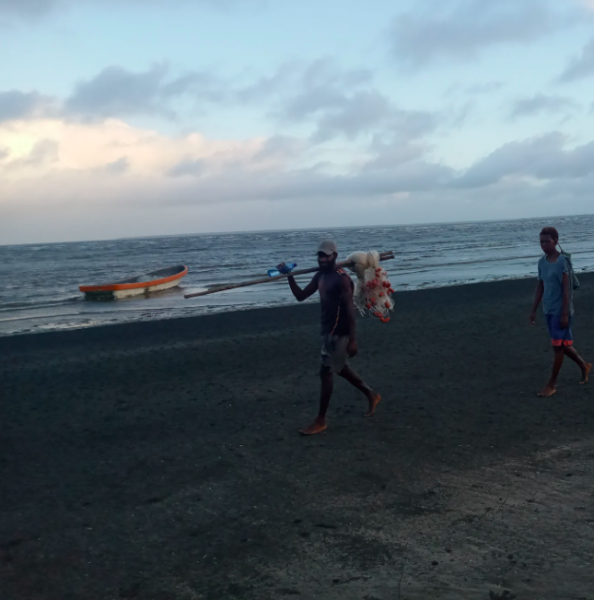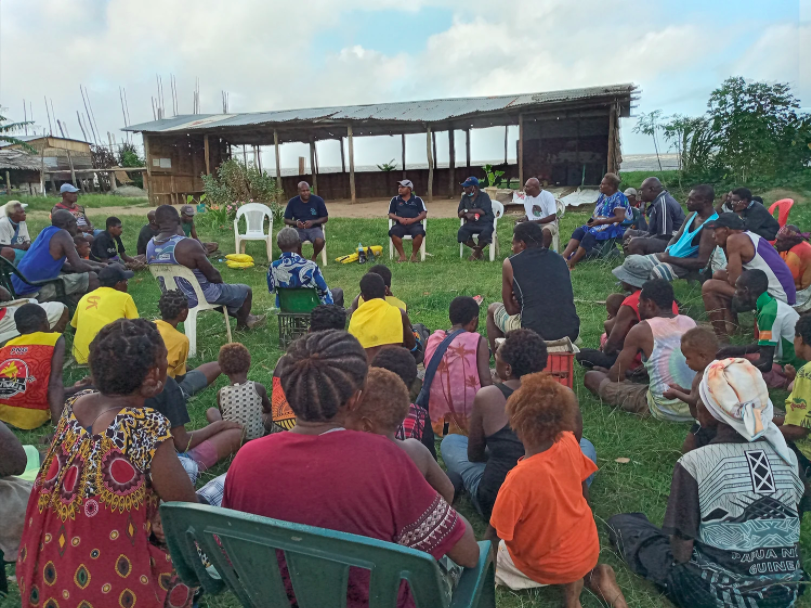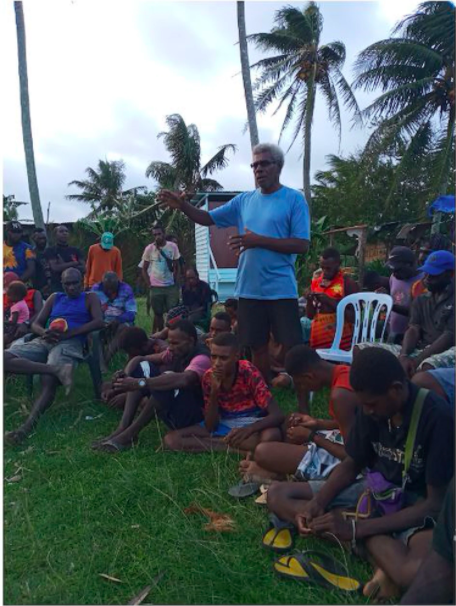Supporting artisanal fishery development in Papua New Guinea
Tuesday, 12 October 2021

This article was originally published on IW:Learn on June 6, 2021
GEF IW:LEARN World Oceans Day 2021 Special Issue
On a grassy field, surrounded by wooden houses and overlooking the Torres Strait at the mouth of the Fly River, we were warmly welcomed by the Head of the of Kadawa village. Located just a short boat ride away from Daru Island, the village is one of the largest in the South Fly District of Western Province, where so many people depend on the sea for survival.
Papua New Guinea (PNG) is home to a vast maritime territory – about 10 per cent of the world's tuna is caught here. The waters surrounding Daru are not the country's most productive, but the villagers here have still been impacted by outsiders encroaching on their traditional fishing grounds. Implementing progressive and inclusive fisheries management for small-scale fishers remains a challenge here, due to limited capacity building at the local level.
Clouds shaded us from the high noon sun, while an ocean breeze helped sweep the heat away. Not long after we had set foot in the village, fishermen and women had begun to gather. On that day, 19 May 2021, we were accompanied by Rickson Lis, who is a representative from the National Fisheries Authority (NFA) of PNG. He is currently working to engage with stakeholders in the region and collect key information on fisheries and stakeholder capacity.


Photo credit: ATSEA-2
“This is the first time the fisheries authority has visited the village to work with the community on the management of artisanal fisheries,” he explained, responding to the ATSEA-2 Programme’s plan to improve fishery management measures by supporting artisanal fishery development and traditional practices. “We will support the Programme to improve the livelihoods of the community,” he added.
Kadawa is one of 14 villages that have traditional rights, including fishing, enshrined in the Torres Strait treaty with Australia. Despite official protection, the Head of the village maintains that commercial operations are normally prioritised ahead of traditional fisheries.
South Fly is covered by a Barramundi Fishery Management Plan. Through the ATSEA-2 Programme, an additional artisanal fisheries management plan for South Fly will be developed, supported by EAFM-awareness and capacity building initiatives. Community-based monitoring, control and surveillance will also be strengthened in the Western Province.
To ensure continued economic benefits, along with the biological and ecological sustainability of PNG’s marine resources, the NFA has put in place the Roadmap for Coastal Fisheries and Marine Aquaculture 2017-2026.
PNG is central to the overall management of the Arafura and Timor Seas (ATS) region, particularly in terms of fisheries management; the Arafura Sea fisheries depend on the same fish stocks from the adjacent Torres Strait that borders Australia and PNG. Therefore, as one of the four countries sharing the Arafura-Timor Seas, PNG’s integration into the Programme is crucial if the regional Strategic Action Plan (SAP) is to achieve its objectives.
By Kenneth Yhuanje, PNG Project Coordinator


Photo credits: ATSEA-2
About the ATSEA-2 Programme
ATSEA-2 is the second phase of the Arafura & Timor Seas Ecosystem Action (ATSEA) programme; a regional partnership involving the governments of Indonesia, Timor-Leste and Papua New Guinea, with the support of the Australian Government. Its objective is to collectively manage high marine and fisheries resources in the Arafura and Timor Seas (ATS) region. Since its inception in 2019, the programme has been working to promote sustainable development in the ATS region and improve the quality of life of its inhabitants through a combination of restoration, conservation and sustainable management of marine-coastal ecosystems. The ATS is an area of high productivity in the region and ATSEA-2 is committed to safeguarding the livelihoods and prosperity of coastal people, particularly in its transboundary areas, through the implementation of sustainable integrated concepts. ATSEA-2 is a Global Environment Facility (GEF)-funded programme, managed and executed under the United Nations Development Programme (UNDP). Partnerships in Environmental Management for the Seas of East Asia (PEMSEA) Resource Facility (PRF) is an implementing partner.
For more information on the ATSEA-2 programme, please contact the Regional Project Manager, Handoko Adi Susanto (hasusanto@pemsea.org), visit the project page on iwlearn.net or the project website.



